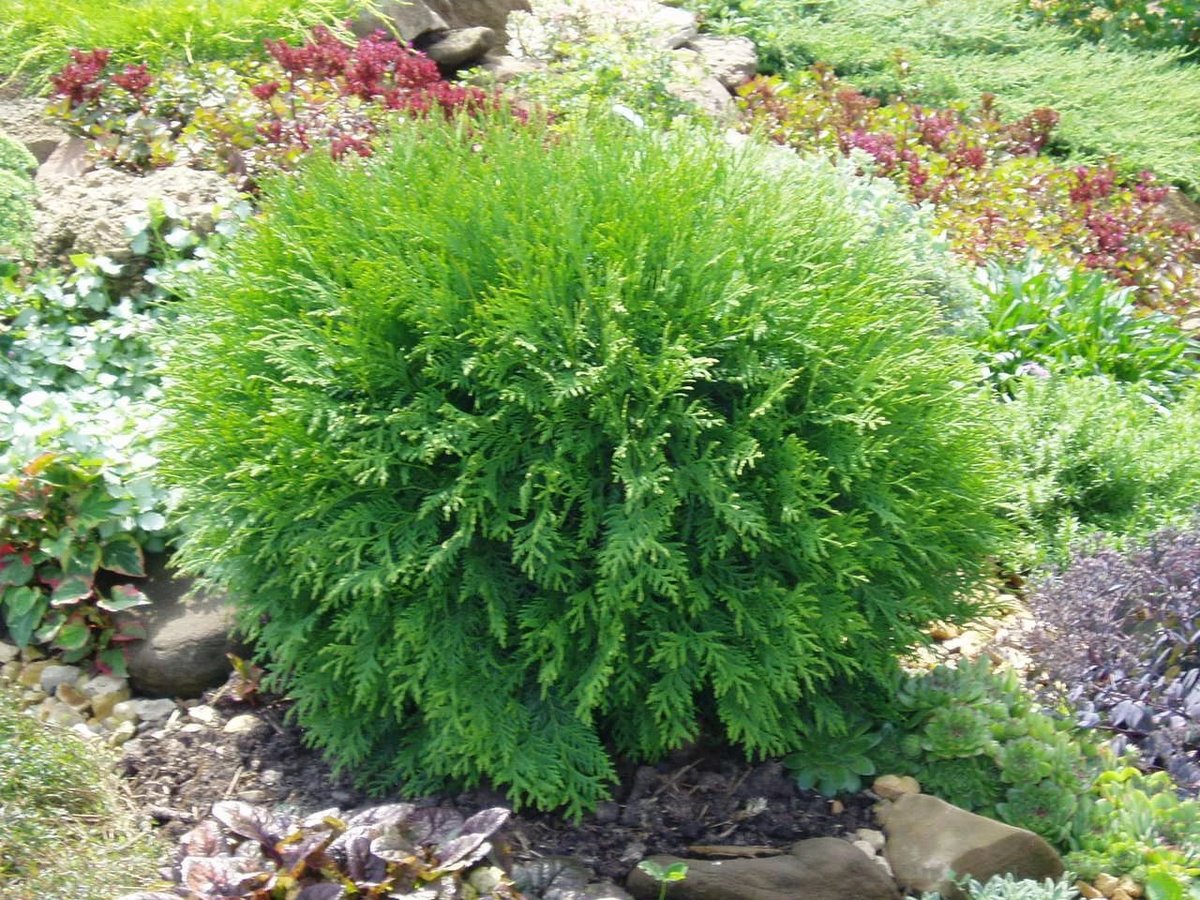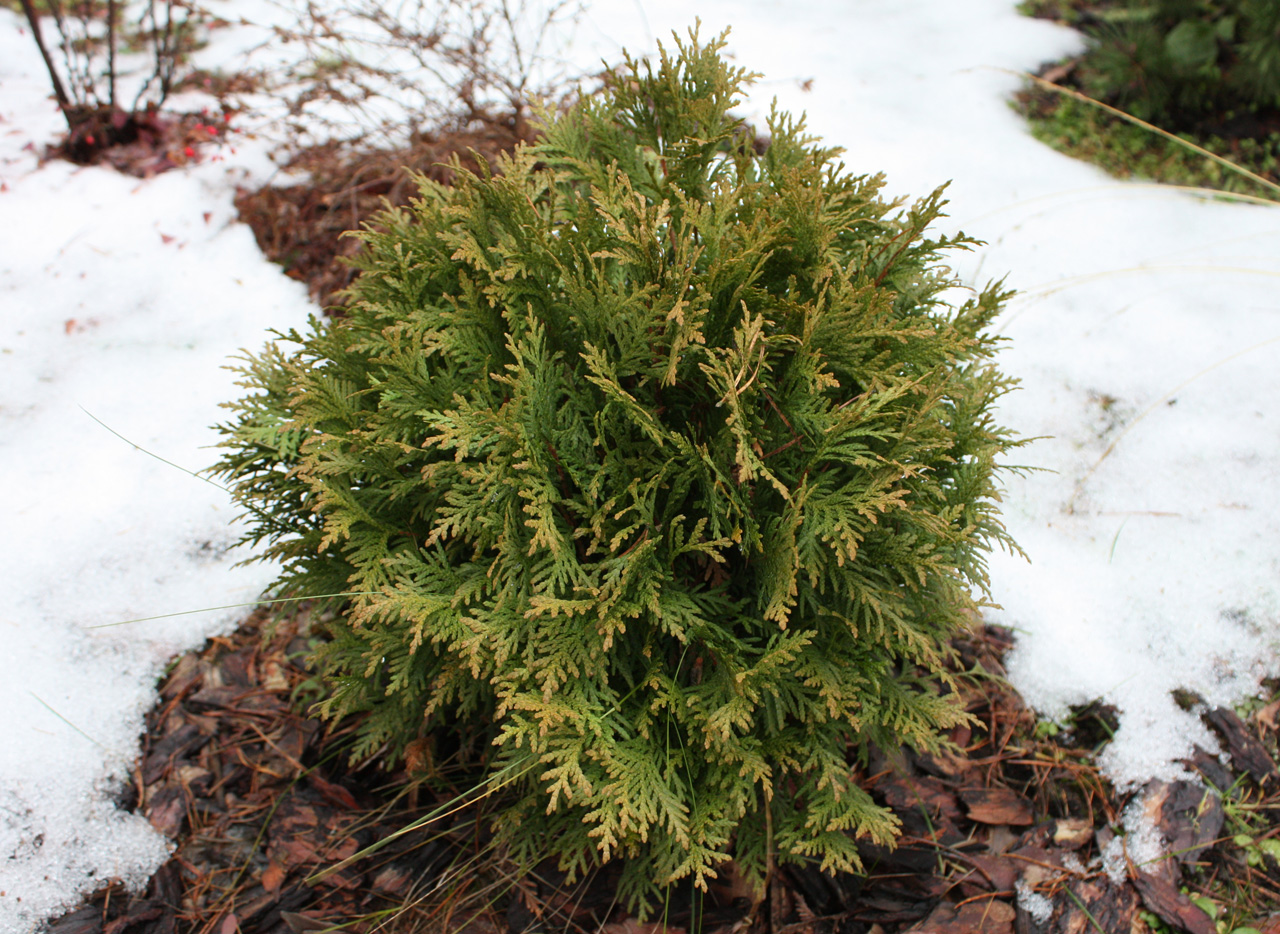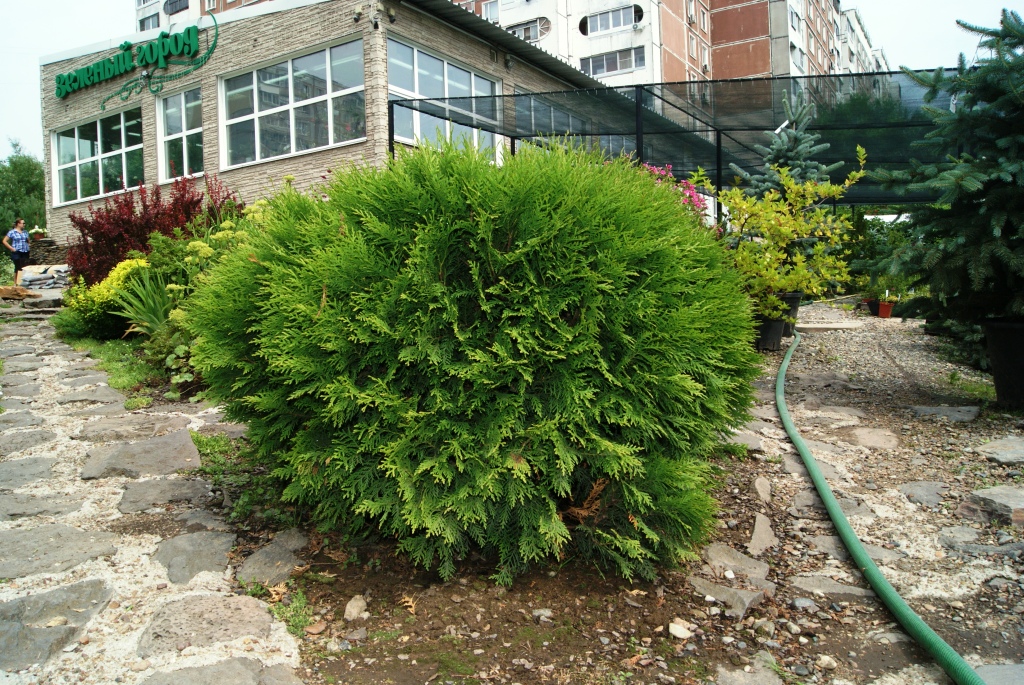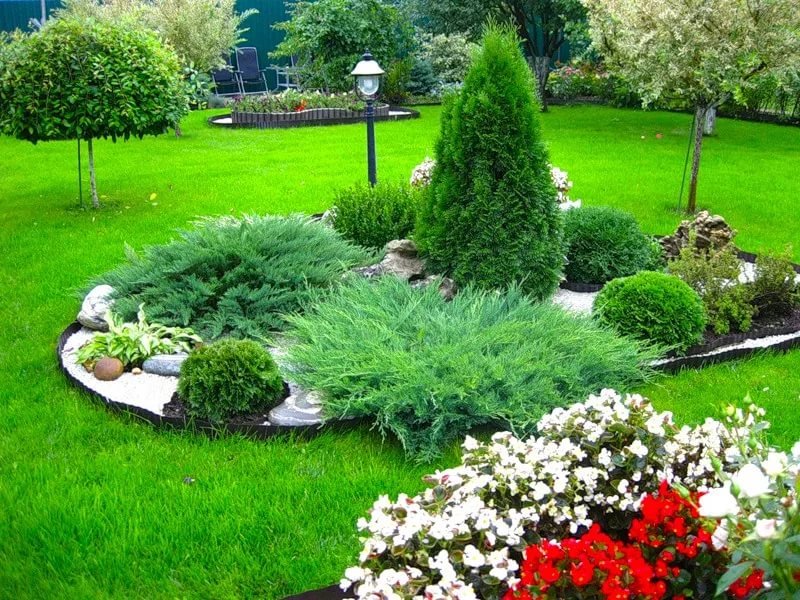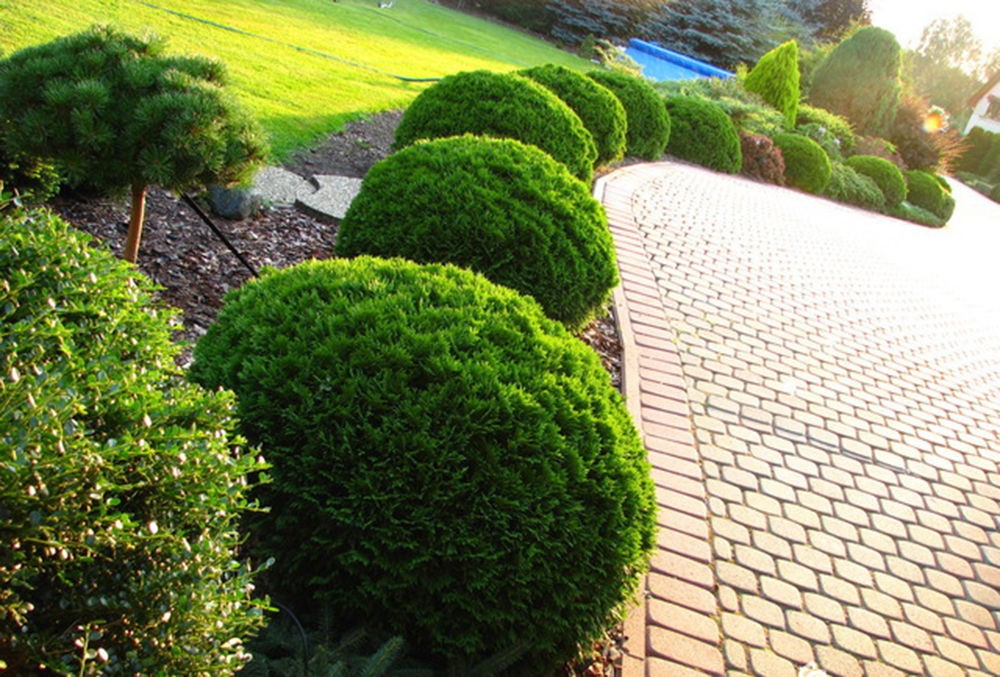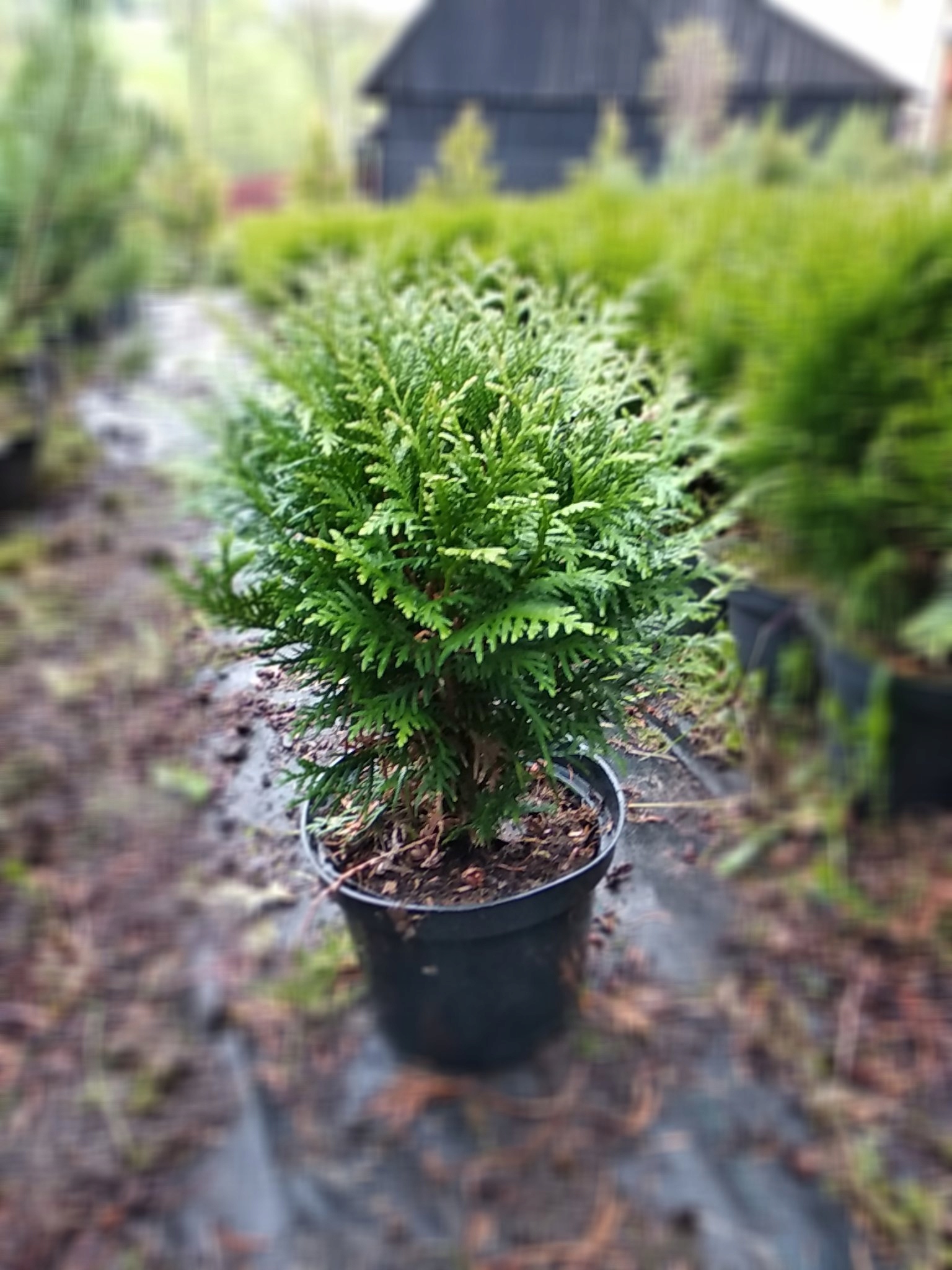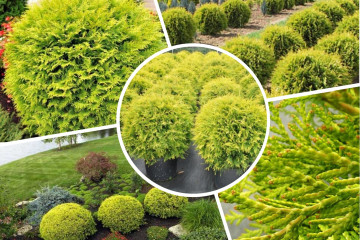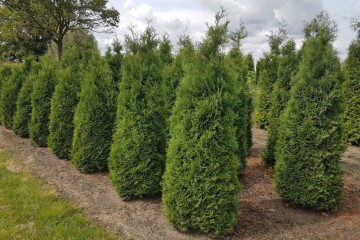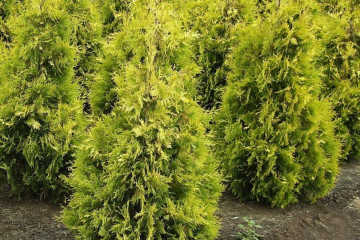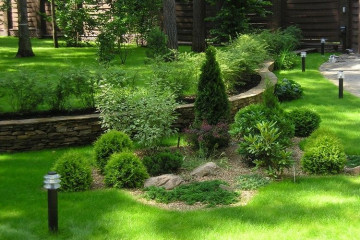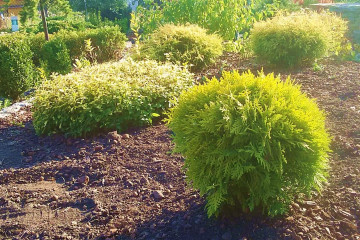Thuja Danica (Danica) spherical - description
Content:
Thuja western (Occidentalis) Danica is a favorite plant of landscape designers around the world. The form is unpretentious, equally well tolerates the unfavorable conditions of the winter period of Siberia and the Moscow region, frosts, summer heat and drought, is resistant to gas pollution of the urban environment. In the landscape it can act as a specimen and go well in groups. Below in the article is a description, features of planting and caring for thuja varieties Danika.
Description of spherical thuja Danica
Thuja western Danica belongs to the evergreen tree crops of the Cypress family. This plant is of North American origin. Natural thickets of "life tree" (as the tree is translated) can be found in the southeast of Canada and the north of the United States. The world selection of thuja has made significant progress, among the natural forms, dwarf varieties were seen, with yellow leaves, selected and propagated. Later, by crossing, it was possible to obtain offspring with a stable inheritance of dwarfism traits. This is how the variety of thuja western Danica was obtained in 1948 in Denmark by A. B. Jensen. Later, the Royal Society of Horticulturalists in England awarded this form with the Garden Distinction award.
Tuya Danica, according to the modern classification in terms of the size of the annual growth, belongs to dwarfs (Dwarf), the life form is a shrub. An adult plant reaches a height of 0.5 m, a diameter of 0.7 m and has an almost regular ball shape. The vertical growth per season is 8-15 cm, horizontal - 12-17 cm. The needles in the form of scales adhere tightly to each other, their color is saturated bright green in summer, yellow and brown color appears in winter. The branches have a vertical direction of growth.
The bark has a reddish tint, but does not play a role in the decorativeness of the tree, since the branches grow densely and completely cover the trunk. Seeds in the form of ovoid cones with two light brown valves are rare.
Use in landscape design
Thuja globular Danica is widely used in the landscape design of urban park areas, areas in front of public buildings and shopping centers, on personal plots.
The uses of Danica in the landscape:
- as a solitaire - the plant appears solo in the foreground of the composition;
- for landing on an alpine slide and rockery;
- to create a border.
Tuya Golden Danica: planting and care
For household planting, it is best to choose a plant in a container. This will avoid drying out the roots in case of long transportation and will allow the shrub to quickly take root in new conditions.
If the plant is not containerized, in any case, the root system should not remain open, but have a package, be in a layer of wet sand, sawdust or sphagnum moss.
Site selection and soil preparation
It is better to plant one or two-year-old plants in the spring, and prepare a hole for them in the fall. Thuja tolerates shading well, so a place in a group of shrubs or in a flower bed, in a mixborder is suitable for it. Young shoots can get burned in the open sun. It is better to protect the plant from cold northerly winds.
Features of the correct planting of the plant
The bush is carefully removed from the container and placed on fertile soil so that the base of the bush is slightly above ground level. This is done because after watering the land under the bush will settle down a little and mulch will be used. The soil above the roots must be well compacted and watered with two buckets of water. After complete absorption, the surface of the earth is covered with peat or grass. Landing on black geotextiles is sometimes used. In this case, the fabric is spread on the prepared soil, a cruciform incision is made in it and a bush is planted.
Thuja care during the growing season
Despite the unpretentiousness of this decorative tree, one must not forget to take care of it. In hot weather, the plant needs watering every week. Sprinkling needles can be used at sunset. The space under the bushes is regularly cleaned with a metal panicle, after watering, the mulch is renewed. If the thuja is planted on geotextiles, sand and debris can be swept away from it with a broom.
Top dressing
In the spring, they give nitrogen fertilizer - ammonium nitrate, 15 g per 10 liters of irrigation water. At the height of summer, to renew the needles and saturation of its color, they are fed with potassium humate with microelements.
Features of winter care
Young bushes for the winter are covered with dense material, preferably white. It is necessary to shake off the snow from adult plants, to protect them from ice. The branches become saggy under the weight of snow and ice, and the bush loses its shape.
Pruning
The form has a restrained growth, therefore, they resort to pruning only on old-growth bushes. Correct the shape, making it correctly rounded, remove drying out branches. Cutting cuttings with a heel is practiced for vegetative propagation of the form. Before planting in wet sand, the cuttings are kept in a root growth stimulator.
Possible growing problems
Brown needles can sometimes be a manifestation of a fungal disease - rust. If after winter the needles do not return the green color for a long time, it is worth spraying with a fast preparation and adding nitrogen fertilization. It is necessary to regularly inspect the bark, pests can settle on it, for example, a false shield. If they are found, treatment with the drug fufanon is carried out.
The characteristics of thuja varieties Danica allow this plant to rightfully take its rightful place in gardens and parks. She is unpretentious in care, so she will not cause trouble for the gardener.
